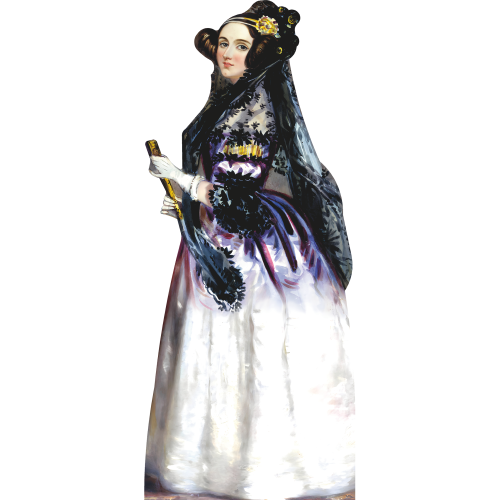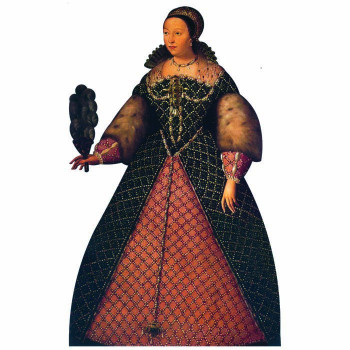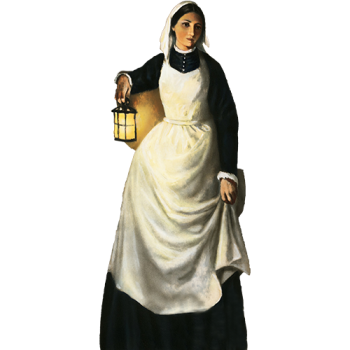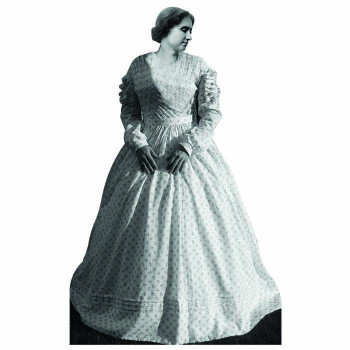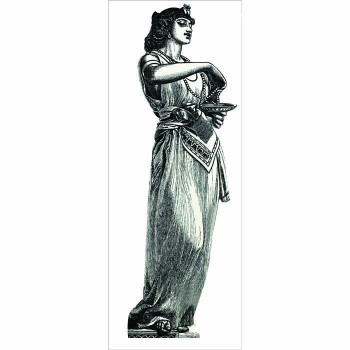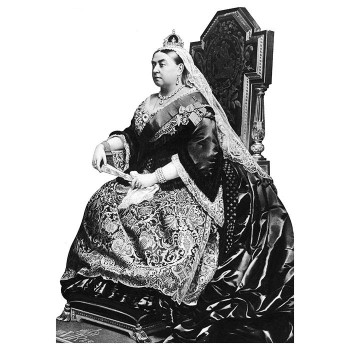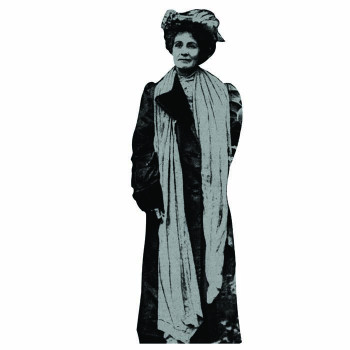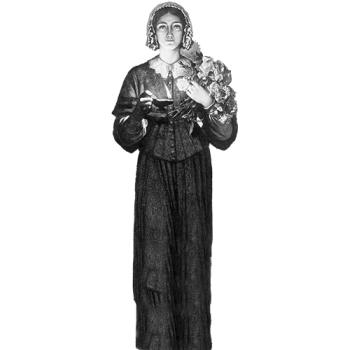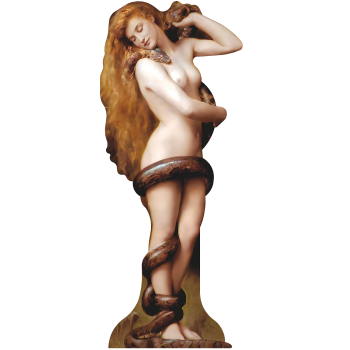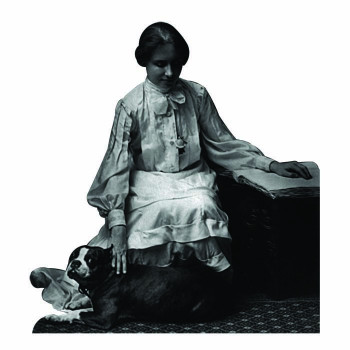ADA LOVELACE PIONEER COMPUTER PROGRAMMER
-
$0.00
Available Options
72x30 inch cardboard cutout of Ada Lovelace. Recognized as the first computer programer, Lovelace was a mathematician from England known for working with Charles Babbage’s mechanical analytical engine, a general-purpose computer. Lovelace was the first to recognize that this machine could be utilized for more than just calculation.
Introduction to Ada Lovelace
Celebrate the legacy of one of the most pioneering figures in computing history with our lifesize cardboard cutout of Ada Lovelace. Perfect for educational displays, technology-themed events, or as an inspiring addition to your home or office, this cutout captures the intellectual presence of Ada Lovelace, reflecting her profound impact on the development of computer science and her role as the first computer programmer.
Background of Ada Lovelace
Ada Lovelace was born Augusta Ada Byron on December 10, 1815, in London, England. She was the only legitimate child of the famous poet Lord Byron and his wife, Anne Isabella Milbanke. Her parents separated when she was just a few months old, and her mother, determined to steer her away from her father's poetic tendencies, provided Ada with a rigorous education in mathematics and science.
Ada’s exceptional mathematical talent was evident from a young age, and she was mentored by several prominent scientists and mathematicians, including Augustus De Morgan and Mary Somerville. In 1833, she met Charles Babbage, an inventor and mathematician, who became her lifelong friend and collaborator. Babbage was working on a revolutionary device called the Analytical Engine, an early mechanical general-purpose computer.
Lovelace's most significant contribution came in 1843 when she translated an article by the Italian mathematician Luigi Menabrea about Babbage's Analytical Engine. She supplemented the translation with her own extensive notes, which included a detailed algorithm designed to be processed by the machine. This algorithm is widely considered the first computer program, earning Ada Lovelace recognition as the world’s first computer programmer.
Lovelace’s notes also demonstrated her visionary understanding of the potential of computers, foreseeing their ability to go beyond mere calculation to perform tasks such as composing music and producing graphics, ideas that were far ahead of her time.
Ada Lovelace passed away on November 27, 1852, at the age of 36. Despite her short life, her work laid the foundation for future developments in computer science and technology.
Cultural Impact of Ada Lovelace
Ada Lovelace’s impact on the development of computer science is profound and enduring. As the first person to recognize that computers could perform tasks beyond basic arithmetic, she laid the conceptual groundwork for modern computing. Her work on the Analytical Engine and her visionary insights into the potential of computers have inspired generations of scientists, engineers, and mathematicians.
Lovelace’s contributions have been widely celebrated in the field of computer science. In 1980, the U.S. Department of Defense named a new computer language "Ada" in her honor, recognizing her pioneering work. She has been the subject of numerous biographies, documentaries, and academic studies, highlighting her role as a trailblazer in a field that continues to shape the modern world.
Ada Lovelace Day, celebrated annually on the second Tuesday of October, honors her legacy and aims to raise the profile of women in science, technology, engineering, and mathematics (STEM). The day serves as a reminder of Lovelace’s contributions and the importance of supporting and recognizing the achievements of women in these fields.
Her life and work continue to inspire those who seek to push the boundaries of technology and innovation. Lovelace's story is a testament to the power of curiosity, imagination, and perseverance in the pursuit of knowledge and progress.
This cutout of Ada Lovelace celebrates her remarkable contributions and enduring legacy as a pioneer of computer science. It serves as a tribute to her intellectual brilliance, her impact on technology, and her significant role in the history of computing.
- Brand: Historical Cutouts
- Product Code:H52816
- Availability:In Stock
LEARN MORE ABOUT OUR AVAILABLE MATERIALS

LIFE SIZE HISTORICAL CUTOUTS
We have been the leading historical based cutout supplier for nearly 10 years. We have worked with many schools, museums, and colleges across the country to provide stunning graphics from hsitory. Historical Cutouts are available in 3 materials and come contour cut with an easel to be self standing. Click below to learn more about each material and our cutout process.
Learn More
LIFE SIZE HISTORICAL WALL DECALS
All of our historical figures are available as a life size wall decals. Vinyl wall decal orders come ready to apply with squeegie and instructions. Having trouble? Check out our how to youtube video. Our graphics are printed on tear resistant PhotoTex Vinyl using our high definition 4 color plus white printing process.
Learn More
HISTORICAL ACRYLIC CUTOUTS
Desktop Legends are a smaller version of our life size cutotus printed on 3/16th" acrylic. All of our historical cutouts are also available as a desktop legend. These acrylic statuettes come in two sizes, 8" and 12". If you would like to learn more please click below.
Learn MoreRELATED PRODUCTS
-
Catherine de Medici Cardboard Cutout
62 inches tall. Our cardboard cutout of Catherine de Medici. All cardboard cutouts come folded and h..
Marie Antoinette Cardboard Cutout
64 inches. Our cardboard cutout of Marie Antoinette. All cardboard cutouts come folded and have an e..
Florence Nightingale Painting
Size: 72x21in; All Florence Nightingale painting cardboard cutouts come folded and have an easel at..
Helen Keller Cardboard Cutout
67 inches. Our cardboard cutout of Helen Keller. All cardboard cutouts come folded and have an easel..
Cleopatra Cardboard Cutout
62 inches tall. Our cardboard cutout of Cleopatra. All cardboard cutouts come folded and have an eas..
Queen Victoria Chair Cardboard Cutout
48 x 34 inches. Our cardboard cutout of Queen Victoria Chair. All cardboard cutouts come folded and ..
Emmiline Pankhurst Cardboard Cutout
65 inches. Our cardboard cutout of Emmiline Pankhurst. All cardboard cutouts come folded and have an..
Florence Nightingale Nurse
Size: 72x21in; All Florence Nightingale 2 cardboard cutouts come folded and have an easel attached ..
Lilith Snake Adam Wife She Demon Cardboard Cutout Standee Standup
Cardboard cutout of Lilith...the primordial she-demon banished from the Garden of Eden for not liste..
Medusa Greek Mythology Cardboard Cutout Standee Standup
Cardboard cutout of Medusa, the snake haired mistress from Greek mythology. Her gaze will turn you t..
Betty Ford Cardboard Cutout
64 x 17 inches. Our cardboard cutout of Betty Ford. All cardboard cutouts come folded and have an ea..
Helen Keller Cardboard Cutout
48 inches tall. Our cardboard cutout of Helen Keller. All cardboard cutouts come folded and have an ..

